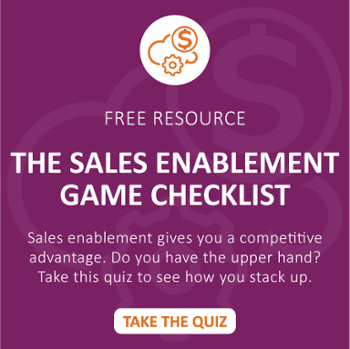![]() It's not just what you say; it's how you say it. In fact, what you say matters a lot less than how you're perceived, especially in sales.
It's not just what you say; it's how you say it. In fact, what you say matters a lot less than how you're perceived, especially in sales.
You have to exude confidence and calmness when calling on prospects. Because, if you don't, they'll pick up on it, and you won't be seen as trusted and valued.
If you can master eye contact (including eyebrow gestures), facial expressions, torso and arms behavior, and leg activity, you'll be on your way to a successful appointment.
Nonverbal Communication in Sales
The message you convey in a sales conversation is 55% nonverbal communication and body language, 38% tone of voice, and only 7% in the words that you actually use.
Prospects are highly visual, and they're most affected by the predominant message that you express through the way you communicate by the way you hold yourself and use your body. Here are a few tips on how you can use your body language to increase sales.

Eye Contact
Are the eyes really the windows to the soul? Whether true or not, pupils are one of the few areas of the body we cannot control.
The eyes and eyebrows tell amazing stories, as the majority of your immediate emotional reaction to what people say and do show in your facial expression – whether they are positive or negative responses.
If you are making minimal eye contact with your prospect or client during your meeting, then they are likely to think that you are distracted or simply uninterested in what they have to say. Equally, if you don’t make eye contact with them while you are speaking, it can make them feel that you are being dishonest about what you are saying, and they are unlikely to trust you.
Make eye contact with your prospects and clients throughout the sales interaction, and make sure your facial expression is calm and relaxed. This not only allows them to feel relaxed and trust you, but by maintaining eye contact, you can watch pupil dilation and tell what the prospect is thinking.
Generally, pupils widen when happy or interested and narrow when concerned or upset.
Facial Expressions
All our lives, we use our faces to communicate with one another. Your facial expressions are not only communicated by what your eyes portray but also in the way:
- Your mouth moves when you talk
- The way your nose crinkles
- A furrowed or relaxed forehead
- The tension that arises in your neck
When you talk, make sure your lips are relaxed (not gritting), and you have a slight smile. That will show you are positive about the information you are giving, and you're pleased to be able to share your experience and knowledge with the prospect.
The Arms And Torso
The way you hold your arms and torso can reveal a lot about what you are thinking.
Crossing your arms is a sign of defensiveness. If you cross your arms naturally, avoid this temptation by placing your hands on your lap while you listen.
Your posture reveals a lot, so listen to your mother and don't slouch! Lean forward slightly and focus on active listening. If you have the nervous habit of clicking your pen or tapping your toes, put away the pen and cross your legs at the ankle. Otherwise, your body language tells the prospect that you're impatient, agitated, or bored.
The Legs
Unless you're in a very specific type of sales, your legs should not be noticed during your appointment. However, salespeople often don't think about controlling their legs or feet during a meeting.
So, again, do not tap your toes, do not constantly cross and uncross your legs, and do all that you can to make your prospect forget you have legs during the time you're talking.
Remember that your own nonverbal expressions must be positive in order to obtain a favorable response from your buyer.
Be Aware Of Your Body Language During A Sales Interaction
Your body language during a sales meeting can easily turn against you, so be aware that how you feel isn't always how you're perceived.
For example. if you're cold, remember that crossing your arms and hunching your shoulders shows you're defensive, even if you're not.
Your prospect doesn't know you, so they're using nonverbal cues to get a read on you. Be aware of your body language during your appointments, give the right signals, and make your prospect's first impression a good one.
The Ideal: Matching And Mirroring
The ideal way to portray yourself in a sales interaction is to match and mirror the body language of your prospects and clients. By reflecting the same gestures, movements, and posture as your client, you will get them to relax and make them feel as comfortable as possible during your meeting.
However, there is a fine line between mirroring and mimicking, and nobody likes to be mimicked. The idea is to make the other person feel at ease in your presence and show that you are involved, interested and focused on them. By mastering the art of matching and mirroring your prospects' and clients' body language during your sales interactions, you are sure to find your future presentations much more successful.
Editor's Note: This was originally published April 16, 2015, and has been updated.



